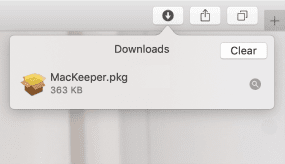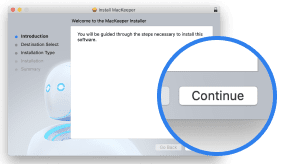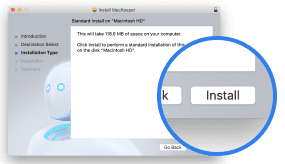We’ve all been there. You’re trying to type a special character on a Mac keyboard and end up copying and pasting every single letter. You’re thinking to yourself, “oh $*«π” — but frustratingly, you’re not even able to type how you’re feeling.
With over 12 years of experience in all things Mac, we’ve learned a plethora of tips and tricks to help speed up your work. Whether you’re looking to accelerate your special character game or learn tips such as how to zoom in with keyboard shortcuts, we’ve got you covered.
Keep reading to learn how to type special characters on a Mac keyboard, including currency, trademarks, accents, math symbols, and much more.
Table of contents:
- Special characters
- Accents
- Math symbols
- Other special characters
- Hidden characters
- Special characters with character view
How to type special characters on a Mac
Here’s a quick cheat sheet for typing special characters on a Mac keyboard. You can copy and paste these special characters or learn how to type each character with our keyboard shortcut guide below.
Key | +Option | +Option - Shift | Key | +Option | +Option - Shift |
A | å | Å | 0 | º | ‚ |
B | † | ¹ | 1 | ¡ | Ž |
C | ç | Ç | 2 | ™ | € |
D |
| Î | 3 | £ | Ð |
E | ´ (used with a character) | ´ | 4 | ¢ | ð |
F | ƒ | Ï | 5 | ƒ | Þ |
G | © | › | 6 | § | þ |
H | ™ | Ó | 7 | ¶ | ý |
I |
| ˆ (used with a character) | 8 | • | ° |
J |
| Ô | 9 | ª | · |
K | š | • | - |
| — |
L | ¬ | Ò | = | ‚ | ± |
M | µ | Â | [ | “ | ” |
N | ˜ (used with a character)
|
| ] | ‘ | ’ |
O | ø | Ø | \ | ´ | ª |
P | π | ∏ | / |
| ¿ |
Q | œ | Œ | ! | ¡ | ⁄ |
R | ® | ‰ | , | ≤ | ¯ |
S | ß | Í | ‘ | æ | Æ |
T | † | ˇ | . | ≥ | ˘ |
U | ¨ (used with a character) | ¨ | ; | … | Ú |
V | √ | ◊
|
|
|
|
W | ∑ | „ |
|
|
|
X | ≈ | ˛ |
|
|
|
Y | ¥ | Á |
|
|
|
Z | Ω | ˛ |
|
|
|
Special characters are keyboard characters without dedicated keys or require more than two steps to create. Although things like password prompts may refer to symbols like @, !, #, or % as special characters, these symbols actually have dedicated keys on U.S. keyboards and are (without getting too pedantic) technically not special characters.
Special characters on a Mac refer to things like currency, trademarks, copyrights, and math symbols.
Below, we cover the keyboard combinations used to type these special characters.
€ (European Euro)
The Euro symbol shortcut on the Mac is different depending on whether you’re using a US orUK keyboard, with an easier method on the latter. When used in English, the Euro symbol should come before the number. However, when used in French or Dutch, place the Euro symbol after the number.
Here’s how to type the Euro symbol on a Mac keyboard:
- UK: Option + 2
- US: Option + Shift + 2
Example: English: €25, French/Dutch: 25€
£ (British Pound)
The British Pound symbol is a staple key on the UK keyboard, taking the place of a pound sign (#) on the US keyboard.
Here’s how to type a British Pound symbol on your keyboard:
- UK: Shift + 3
- US: Option + 3
Example: £25
¥ (Japanese Yen or Chinese Yuan)
The ¥ symbol is used for both Japanese Yen and Chinese Yuan. In both languages, it is typed before the number.
Here’s how to type a Yen or Yuan symbol:
- ¥ — Option + Y
Example: ¥50 or CN¥50
¢ (Cents)
The cent symbol is a commonly used denomination across several currencies. Contrary to most other symbols, the cent symbol is typed after the number.
Here’s how to type a cent symbol:
- ¢ — Option + 4
Example: 50¢
™ (Trademark)
A trademark is a symbol (mark) that’s unique to a business (trade). Trademarks are used to differentiate a product from another brand.
Here’s how to type a trademark:
- ™ — Option + 2
Example: 3M: Science. Applied to Life.™
® (Registered symbol)
You can think of a registered symbol as a superpowered trademark. The ® symbol stands for, you guessed it, a registered trademark. This means it’s protected by the U.S. Patent and Trademark Office. Registered trademarks protect a slogan, logo, or brand name — essentially, it protects an intangible piece of intellectual property.
Here’s how to type a registered trademark:
- ® — Option + R
Example: Coca-Cola®
© (Copyright)
While the registered symbol (®) protects a slogan, logo, or brand name, the copyright symbol (©) protects the product itself. A copyright protects the right to make copies of or license a particular piece of work.
Here’s how to type a copyright symbol:
- © — Option + G
Example: © 1998 — 2022 Costco Wholesale Corporation. All rights reserved.
˚ (Degrees)
The degrees symbol is one of the most commonly used special characters. Whether you’re bracing for a winter storm or battling the desert heat, you’ll need to know how to use the degree symbol in a variety of scenarios.
Here’s how to type a degree symbol:
- º — Option + 0
Example: Today is 73º Fahrenheit.
How to type accents on a Mac keyboard
The option key helps you add several different types of accents and diacritic marks. Usually, you can press the Option key + the letter you’d like to add an accent to, and several options will appear.
Check out these accent shortcuts with a guide to keystrokes, or the order of keys you’ll need to press.
Character | Accent | Key Stroke | Uppercase | Lowercase |
´ | Acute | Option + e + character | Á É Í Ó Ú | á é í ó ú |
` | Grave | Option + ` + character | À È Ì Ò Ù | à è ì ò ù |
˜ | Eñe / Tilde | Option + n + character | Ã Ñ Õ | ã ñ õ |
ˆ | Circumflex | Option + i + character | Ê Î Ô Û | â ê î ô û |
¨ | Umlaut | Option + u + character | Ä Ë Ï Ö Ü Ÿ | ä ë ï ö ü ÿ |
Ø or ø |
| Option + o | Ø | ø |
Å or å |
| Option + a | Å | å |
Æ or æ |
| Option + ‘ | Æ | æ |
Œ or œ |
| Option + q | Œ | œ |
Ç or ç |
| Option + c | Ç | ç |
¡ |
| Option + ! | ¡ |
|
¿ |
| Option + ? | ¿ |
|
Acute accent: á, é, í, ó, or ú
An acute accent represents a variation in tone for spoken words, signifying a sharper pitch. Acute accents are commonly used in languages such as Latin, Spanish, Greek, and various Eastern European dialects.
Here’s how to type an acute accent on your Mac keyboard:
- Press Option + E
- Press A, E, I, O, or U (the letter you want to add an accent to)
Example: Sí papá
Grave accent: à, è, ì, ò, or ù
Contrary to acute accents, grave accents are spoken with a heavier, louder tone. Grave accents are common in languages such as Italian, French, Portuguese, Norwegian, Catalan, and Vietnamese.
Here’s how to type a grave accent on your Mac keyboard:
- Press Option + ` (upper left of keyboard)
- Press A, E, I, O, or U (the letter you want to add an accent to)
Example: Vai in città
Eñe character: ñ, ã, õ
An eñe (ñ) character is a commonly used letter of the Spanish alphabet and is unique in how it has its own place in the alphabet (after N).
However, you will not be able to find it on a regular QWERTY keyboard. So if you need to learn how to type ñ on a keyboard, we’ve got you covered.
Here’s how to type an eñe character on your Mac keyboard:
- Press option + N
- Press N, A, or O (the letter you want to add an accent to)
Example: No, señor
Circumflex character: â, ê, î, ô, or û
Circumflex characters are commonly used in languages such as French, Portuguese, Welsh, Turkish, Persian, Russian, and Ukrainian.
Here’s how to type a circumflex character on your Mac keyboard:
- Press option + I
- Press A, E, I, O, or U (the letter you want to add an accent to)
Example: Côte d'Azur
Umlaut accent: ä, ë, ï, ö, or ü
Umlaut accents are well known for being a feature of the German language but they’re used in a plethora of others too. This includes Finnish, Hungarian, Slovak, Swedish, and Turkish.
Here’s how to type a circumflex character on your Mac keyboard:
- Press Option + U
- Press A, E, I, O, or U (the letter you want to add an accent to)
Example: Äpfel
Ø or ø
The character ø is commonly used in Scandinavian languages such as Danish, Norwegian, and Faroese.
Here’s how to type an Ø or ø on your Mac keyboard:
- Ø | Uppercase: Shift + Option + O
- ø | Lowercase: Option + O
Example: mør
Å or å
Similar to ø, the character å is commonly used in Scandinavian languages including Danish, Finnish, Norwegian, and Faroese.
Here’s how to type an Å or å on your Mac keyboard:
- Uppercase: Shift + Option + A
- Lowercase: Option + A
Example: ålder
Æ or æ
The character Æ represents a ligatured ae.
Here’s how to type an Æ or æ on your Mac keyboard:
- Uppercase: Shift + Option + ‘
- Lowercase: Option + ‘
Example: Cæsar
Œ or œ
The character œ is a ligature of o and e. It is most often used in Latin and French.
Here’s how to type an Œ or œ on your Mac keyboard:
- Uppercase: Shift + Option + Q
- Lowercase: Option + Q
Example: manœuvre
Ç or ç
The character ç is often used in Middle Eastern languages such as Albanian, Azerbaijani, Turkish, and Kurdish. It is also used in some European languages including Catalan, French, and Portuguese.
Here’s how to type an Ç or ç on your Mac keyboard:
- Uppercase: Shift + Option + C
- Lowercase: Option + C
Example: comme ça
¡
Inverted punctuation, such as ¡ or ¿, are commonly used in Spanish and Latin American Spanish languages. These characters are used to begin and end an exclamatory sentence.
Here’s how to type ¡ on your Mac keyboard:
- Option + 1
Example: ¡Celebración!
¿
Similar to ¡, the character ¿ is used to begin a question. It is mirrored at the end with the standard punctuation format of a question mark.
Here’s how to type ¿ on your Mac keyboard:
- Shift + Option + ?
Example: ¿que?
How to type math symbols on a Mac keyboard
There are two ways to type math symbols on your Mac keyboard: using the character viewer to manually select symbols, or using character combinations.
Check out the keyboard shortcuts below:
- ∑ — Option + W
- Π or π — Option + P / Shift + Option + P
- ∆ — Option + J
- ƒ — Option + F
- Ω — Option + Z
- ≈ — Option + X
- √ — Option + V
- ∫ — Option + B
- Μ or µ — Option + M
- ≤ — Option + <
- ≥ — Option + >
- ∞ — Option + 5
- ≠ — Option + + (plus sign)
Other special characters
Above, we listed several common special characters and how to type them on a Mac keyboard.
But there are several additional characters you can type using keyboard shortcuts as well. Keep reading for additional characters and how to type them.
- § — Option + 6
- ¶ — Option + 7
- • — Option + 8
- ª — Option + 9
- † — Option + t
- … — Option +
For other special characters not listed, you can always use the character viewer from your emoji keyboard. This will allow you to type special characters including hearts, arrows, stars, horoscopes, and more.
How to type special characters with character view
If keyboard shortcuts feel a bit overwhelming to memorize, character view is a great alternative you can add to your menu bar.
However, using the character view can be time consuming since you’ll need to manually search for and select each character.
To use the character viewer, use the shortcut ^ + Command + Space, or:
- Click Edit on your menu bar
- Click Emojis and Symbols
- Click the expansion button on the top right
- Click the symbol type you’d like to use on the left-hand side
- Manually select your symbol
How to see hidden characters on your Mac
If you’re more of a visual learner, you may want to consider using the keyboard viewer to see an on-screen representation of the hidden characters on your keyboard.
However, it’s important to note that running background processes like this could slow down your Mac.
Here’s how to see more hidden characters on your Mac:
- Go to your system preferences and select Keyboard
- Select the Input sources tab
- Check the box titled Show Input menu in menu bar
- Look at your menu bar to find a symbol that looks like a calendar with a command symbol within it — this is the keyboard viewer
- Click Show emojis and symbols
- Click the calendar icon in the top right corner of the new window to reveal the full list of special characters
Conclusion
If you’re looking up special characters, it’s likely that you spend quite a bit of time on your Mac.
We don’t blame you — we love Macs too! To keep your computer running in tip-top shape, read this Mac basics guide to find out how.







